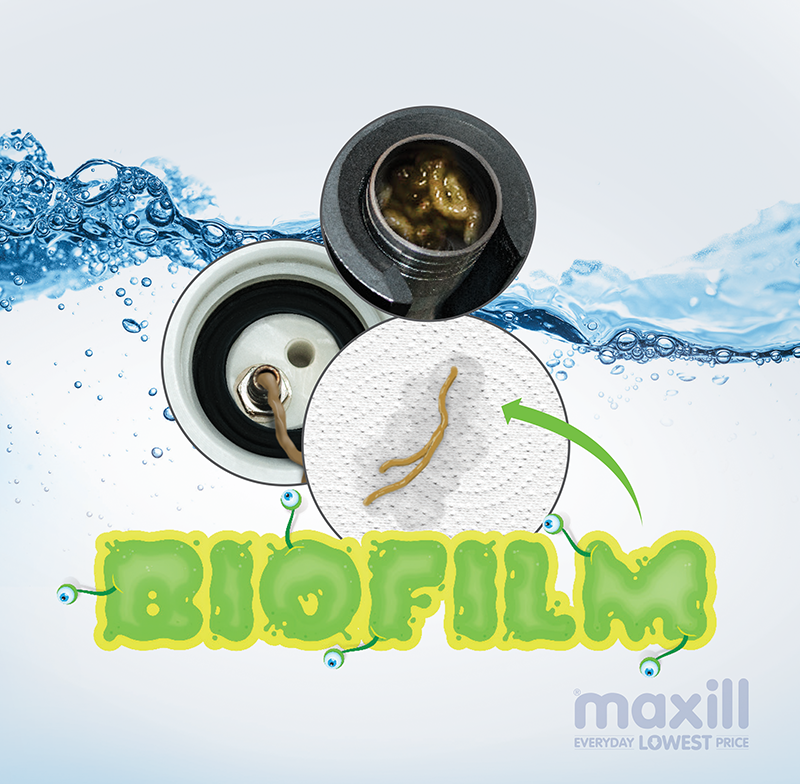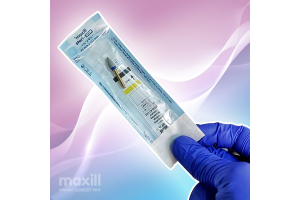How Do You Clean Dental Unit Waterlines (DUWL)?

Cleaning and maintaining Dental Unit Waterlines is essential for patients and dental professionals' health and safety.
Not only does it keep patients safe from harmful bacteria, but it also helps to protect equipment longevity.
Dental Unit Waterlines are a common source of microbial contamination and need to be cleaned regularly in order to prevent build up of a microbial biofilm colony inside the narrow tubing of the DUWL.
Reasons for Cleaning
Dental Unit Waterlines are essential to keeping a dental practice running smoothly. It is important to keep these waterlines clean and free from contaminants to ensure the safe delivery of water during dental services.
There are several reasons for regularly cleaning dental unit waterlines, which will be discussed below:
The main reason is to reduce the risk of infection. Contaminated water entering the mouth during treatment procedures can lead to further infection and illness for the patient. Therefore, regular cleaning of Dental Unit Waterlines can help reduce this risk significantly.
Contaminated water can spread bacteria, viruses, and other pathogens that can cause serious health issues and even death in patients if not properly managed. These microorganisms can cause a wide range of illnesses, from minor illnesses such as skin irritation to more severe health issues such as respiratory infections.
Regularly purging or flushing out old, stagnant water does not remove the bacteria in the line but helps move the dangerous microbes that could be present out of the lines.
How Do You Disinfect Water Lines?
It is essential to regularly clean and disinfect your dental water lines to prevent biofilm from growing inside them.
It is recommended they be cleaned daily with an enzymatic cleaner and disinfected with a chemical offering disinfecting properties.
There are gaps in knowledge on product selection of DUWL disinfecting products, where often a dental office is using a cleaning agent and not a true disinfectant agent.
Cleaning and disinfecting will help maintain the highest level of safety by reducing the risk of spreading diseases through contaminated water lines.
Dental supply companies like maxill provide dentists, hygienists, and assistants with the dental supplies they need to perform this task.
A dental unit waterline disinfection procedure can be done through several steps, all of which must be implemented by any dental providers that use these units.
To ensure that all lines are disinfected, it is necessary to follow specific steps and procedures.
Here are the key steps you need to take when cleaning, disinfecting, and testing Dental Unit Waterlines:
Step One: Clean
The first step is to clean. This can only be accomplished by the offices with closed bottled systems. The older offices that run off municipal water with no bottles are only on the hook for purging the lines. In essence, if there is no bottle there is no means of delivering the enzymatic cleaner. The water in the bottles must be changed daily, using distilled water. Although some offices use fresh, cold tap water, it is not recommended as municipal water may be prone to a boil water advisory leaving the dental office unable to operate. Emptying the bottle of its water contents daily will help remove any sediment or other accumulated buildup over time.
Remove all handpieces, air water syringes and disconnect the water bottle and purge water from all the dental unit water lines. Swap out the water bottle for the enzymatic cleaning bottle. Follow the manufacturer’s instructions for use for mixing and exposed tine for the enzymatic cleaner.
Step Two: Disinfect
Second, it is recommended to use a chemical disinfectant for dental waterline maintenance, so follow instructions for preparation and dosage carefully. Peracetic acid is the quality choice for a dental unit waterline disinfectant as it offers the same properties as chlorine dioxide but at a lower pH, thus not harming the material of the plastic lines and rubber o-rings. Interestingly enough, peracetic acid is the choice water line disinfectant in many other industries, especially in food and beverage processing that require the use of water dispensed via small tubing.
It's essential to use a water line disinfectant solution designed specifically for dental units to help kill off any bacteria or organisms in the line. Read your labels as many products claiming to be a disinfectant for dental unit water lines are simply a glorified cleaner.
Once the chemical has been added to the water reservoir, it should remain in contact with all surfaces for the recommended time based on the manufacturer’s instructions for use before being drained away along with organic matter from prior treatments. This solution must touch all surfaces within the system, so ensure it circulates fully by purging the disinfectant through the lines for the directed time span.
Once the disinfecting step is completed, the bottle can be changed back to the distilled water to finish the 2nd step with a full water flush. If using peracetic acid, this includes testing the water to ensure there are no residual chemicals remaining in the dental unit waterline. Where there is water, there is biofilm that needs to be destroyed! Here’s another article about biofilms, which may very well scare you into disinfecting immediately!
Step Three: Test
Ensuring the water dispensed through the small circumference waterline is safe for use can only be accomplished with a water test. Dental offices can use an in-office hygienic monitoring system or , test by sending samples out to a lab for heterotrophic plate counts. Note the hygienic monitoring system is an accepted testing method as the manufacturers include a legend to map a parallel to potential colony forming units of bacterial growth. In-office testing that uses agar plating offers reliable results that can be accurately interpreted. Systems relying on a simple color change as an indicator for basic bacterial growth run the risk of too many variations in interpretation.
In the initiation of a dental unit waterline program the testing is best performed after the first round of cleaning and disinfecting. The office will interpret and log the results and follow the manufacturers’ instructions for frequency of testing.
Still not sure? Need a visual? Here’s a video, showing the whole process!
https://www.youtube.com/watch?v=4iKcUZX1ZWs&t=191s
Want more reading material, here’s an great article. https://www.maxill.com/ca/blog/post/where-does-it-state-that-an-office-needs-to-have-a-program-or-system-for-their-duwls
What Does the CDC Recommend in Regard to Dental Unit Waterlines?
How bad is the health threat of a contaminated dental unit waterline? Bad enough for the CDC in October 2022 to have has issued advice related to Dental Unit Waterline maintenance. The cause for concern is multiple outbreaks of nontuberculous Mycobacteria (NTM) infections post the treatment of pulpotomies in children. The dental unit waterlines contained high levels of bacteria that lead to infections that were completely preventable. The matrix of biofilm can give rise to the opportunity of legionnaires. Waterlines in Dental offices are an essential part of any dental office's infrastructure as they provide clean irrigation water during dental procedures.
Conclusion
With clear instructions and effective water line cleaning, disinfecting, and testing products available, there’s no reason not to provide your patients with a perfectly sanitary experience when you’re rinsing out their mouth during or after a procedure.
When it comes to infection control products, there’s no better choice than maxill. For these, or daily disposables, procedurals, promotional items, and oral health, be sure to look through our online catalog. You’ll be surprised and delighted to see our everyday lowest pricing shown clearly for every product!
Let’s eliminate biofilms and harmful bacteria and viruses in dental office water lines everywhere!







